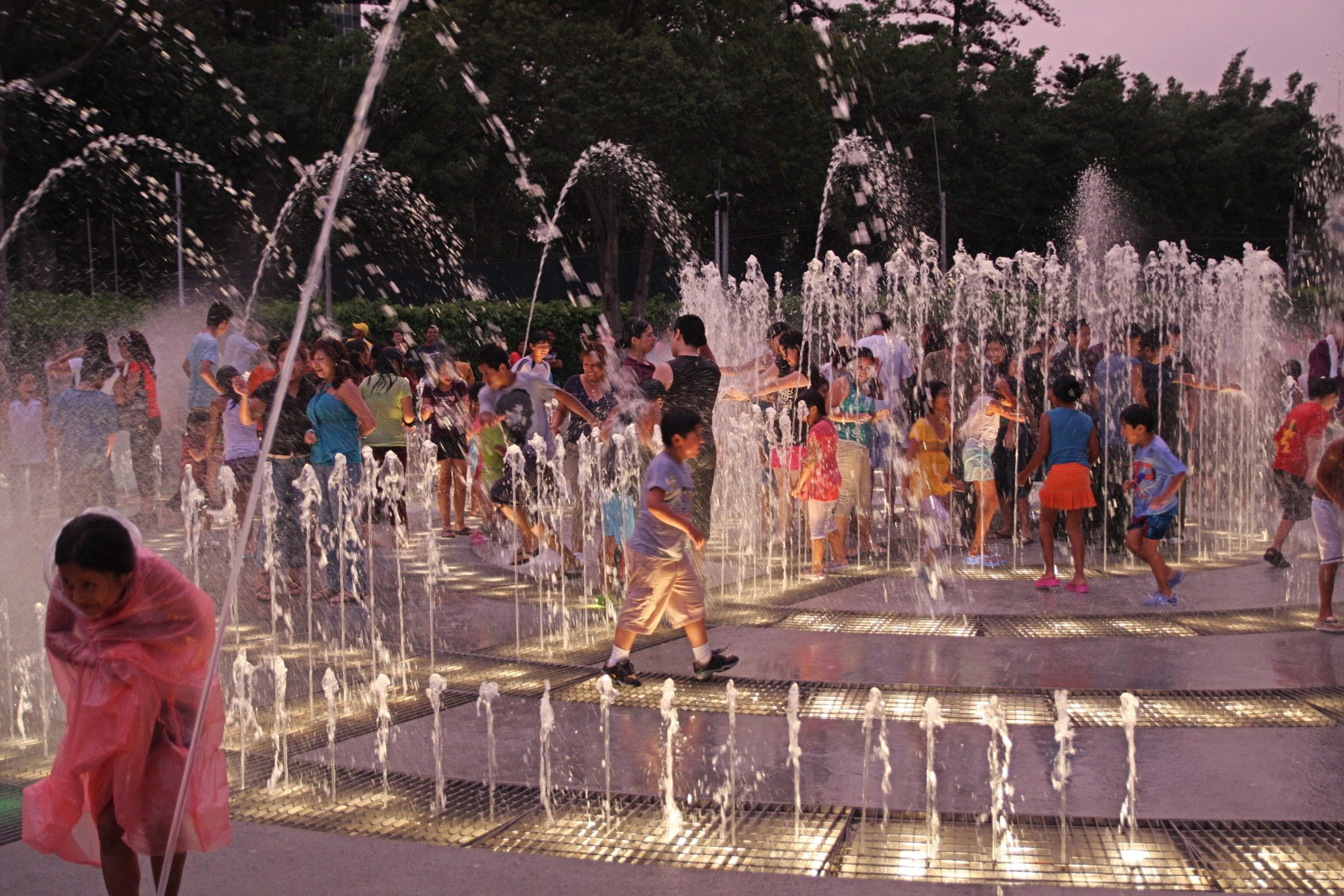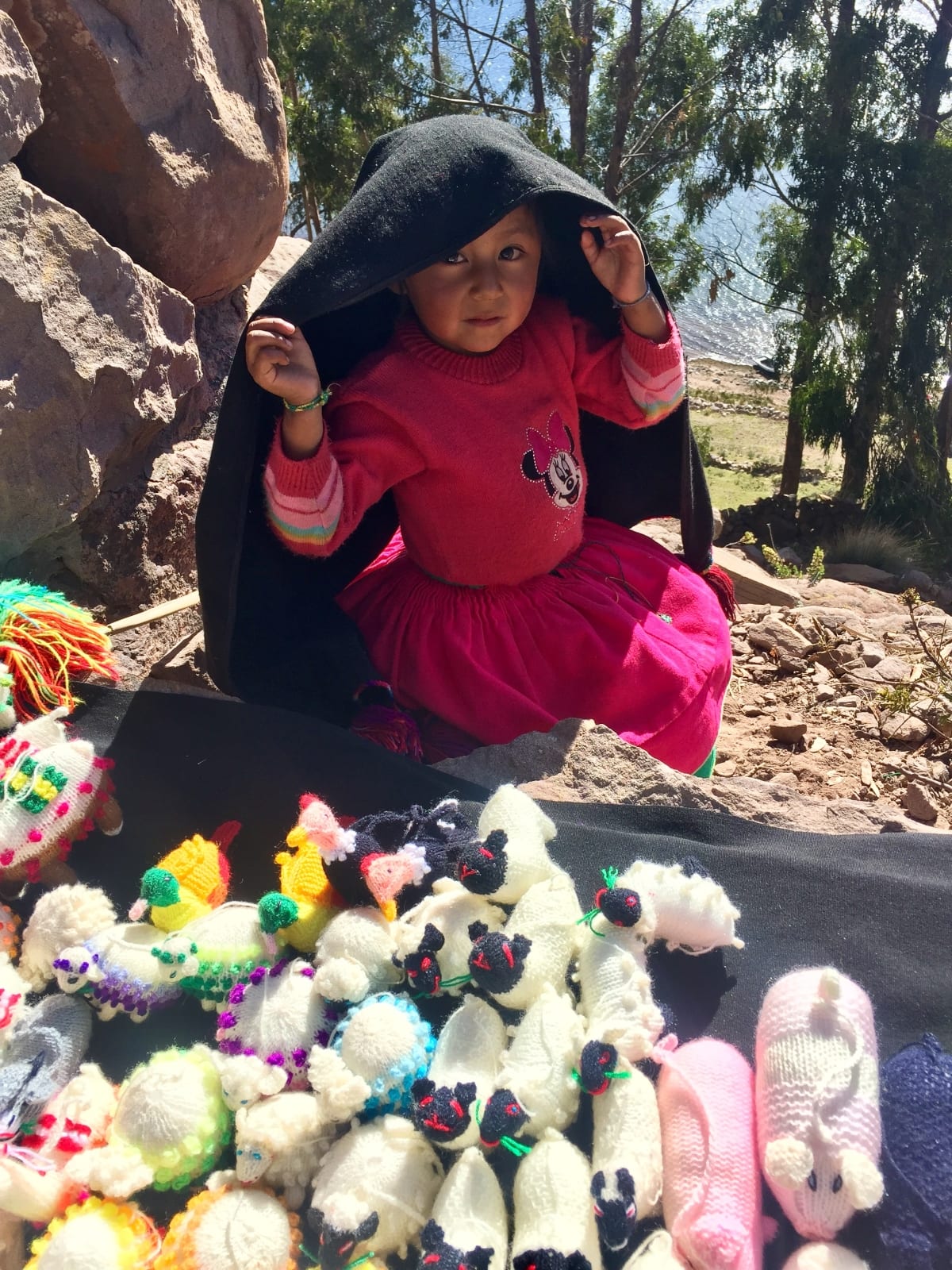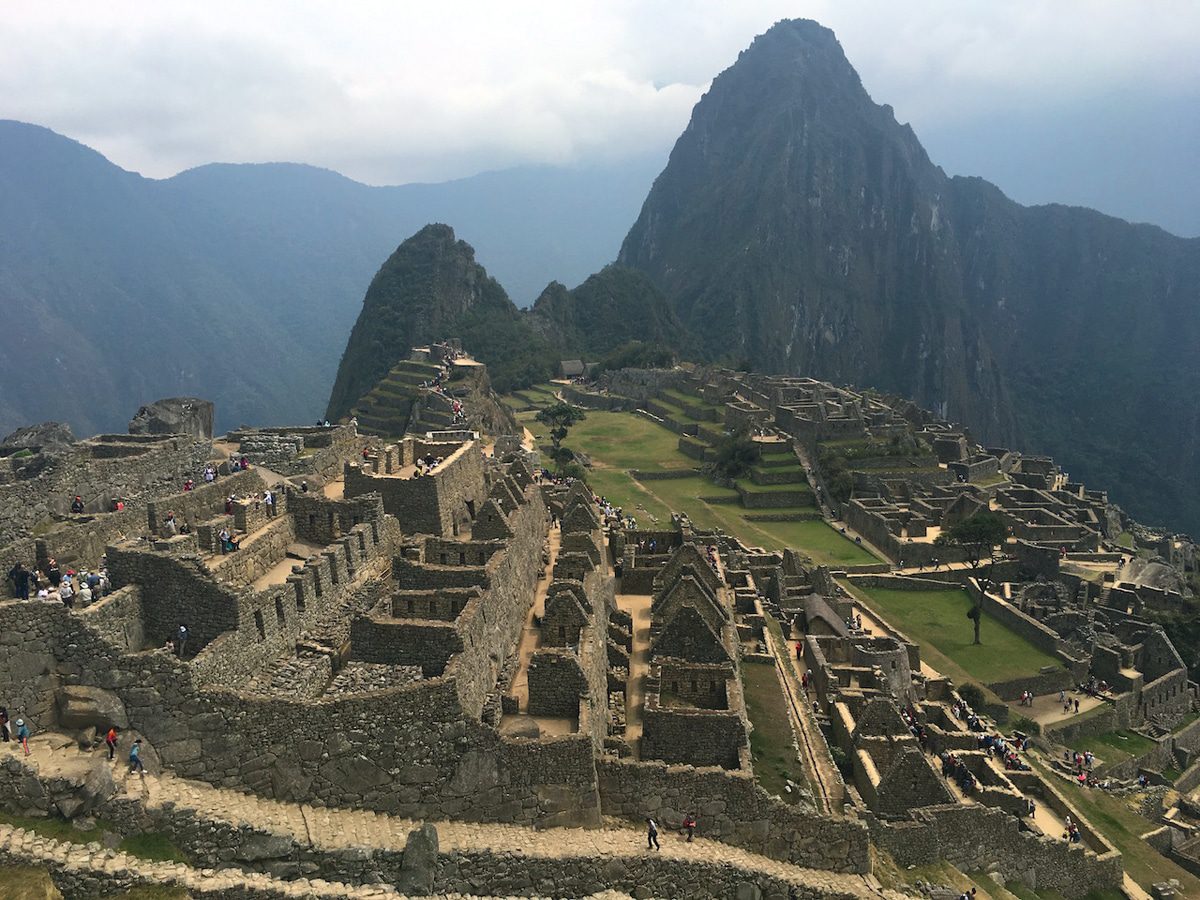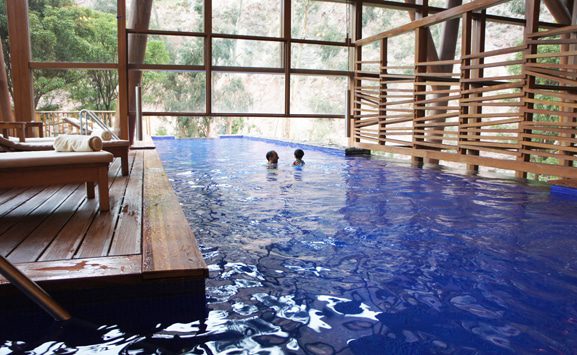Off the Grid in Peru with Kids
- July 29, 2018
- 7 Min Read
Peru looks and feels like Indiana Jones territory. And travelling there with kids in tow is an adventure of epic proportions. It’s certainly not for the faint of heart. Transportation difficulties, truly outlandish food, and the country’s rugged nature can be incredibly challenging.
But boy, it’s worth it.
A number of years back, I took a trekking tour of southeastern Peru with my son George. We started our tour in the capital city, Lima. It’s a safe bet because it’s practically at sea level, meaning there are no issues with acclimatization nor altitude sickness.

Traveling in Peru with Kids
Lima
As a city, Lima is surprisingly dynamic. A trip through the central district takes you past churches dating from as early as the 16th and 17th centuries, the most notable of which are the Cathedral of Lima and the Monastery of San Francisco, said to be connected by eerie subterranean catacombs.
We visited Friendship Park in Santiago de Surco. The centerpiece of the park is a 29-meter-high Arco Morisco (Moorish Arch), with lookout points that allow you to see over much of Surco and the gardens below. A 1920s steam train, refurbished to full working order, chugged us around the park and we rented pedal boats at the lagoon.
Want help booking a Peru family vacation?
Our Family Vacation Advisors can work with you one on one to plan an unforgettable trip. Click to send us a request! >
We spent a couple of hours at the Natural History Museum in the district of Jesus Maria. It’s everything kids think a museum should be, with exhibits ranging from the full skeleton of a whale to fossil dinosaurs, minerals, pre-historic mammals and what seems like the entire population of Peru’s birdlife stuffed and mounted for closer inspection.
Puno
Next stop: Puno. This high-altitude city (at 12,628 ft) was billed as the jumping-off point for our explorations of Lake Titicaca.
It’s worth knowing that acclimatization proper starts, in practical terms, over 2,000 meters. Turns out we should have made a layover at an intermediate altitude, because within hours of arriving we were both feeling the effects of headache, nausea, dizziness and shortness of breath. These sorts of symptoms occur when the body has not had time to adjust to thin air.
We took the advice at the local pharmacy, where they told us to take things easy, eat only light meals, drink plenty of water and drink no booze for the first day or two. (Diamox is often prescribed, but be sure to consult with your doctor before you leave as not everyone can take it, plus it isn’t without side effects that can prove as troublesome as altitude sickness.) We stuck to drinking mate de coca (tea made out of coca leaves) and took a few aspirins. That seemed to do the trick.
Puno is the capital of Peru’s altiplano — and this harsh highland region is probably better suited to roaming vicuñas and alpacas than to people. But it is also Peru’s folklore center, with a rich array of handicrafts, costumes, holidays, legends and more than 300 ethnic dances.
In February, Puno hosts the Feast of the Virgin de la Candelaria, and the town is filled with processions, music and fireworks. Our favourite spot became the market down by the train tracks. The vibrant colours here, the sounds and smells, are uniquely South American. Local ladies wearing traditional polleras and monteras sell seemingly every variety of potato (potatoes originate in the Andes), fresh flowers, handicrafts and beautifully crafted musical instruments.

Lake Titicaca
Of course, our biggest venture was Lake Titicaca. The world’s highest navigable lake is deep blue and sits in a cup of mountain peaks. According to legend, the first Inca, Manco Capac, emerged from Lake Titicaca and founded the Inca empire. They say that the shape of Lake Titicaca is a giant puma, opening his mouth to eat a rabbit (the rabbit being Puno Bay).
Since pre-Inca days, the local Uros Indians have lived on tiny floating islands built on soft patches of totora reeds here in the middle of Lake Titicaca. It’s an extraordinary sight. The natives who live on these reed islands actually do eat, sleep and work on the islands. They mostly subsist off the reeds and fish, and the money they earn comes from tourists and mainlanders who buy their fish and handicrafts.
Lake Titicaca has a number of these reed islands, and they all depend on each other for survival. But the Uros don’t reject modern technology: Some boats have motors; some houses even have solar panels to run TV. They have a radio station, schools, a clinic and even a church.
The hardest thing to fathom was how these entirely man-made islands stand up to so much traffic. The Uros start the islands with a dense, natural growth of reeds, then pile bundled reeds on top of each other to form a circle, which they replenish repeatedly every fortnight.
We stepped tentatively onto one island, only to find it soft, springy and — thankfully — very supportive underfoot. The purpose of the island settlements was originally defensive, and if a threat arose they could be moved. I lost sight of George for a few minutes and finally spotted him high in a watchtower engulfed by a huge, yawning reed monster. Impressive workmanship.
George ping-ponged his way around the floating island, chewing on iodine-rich reed roots. He made fast friends with a local kid who invited him out on a boat ride. I held my breath as they floated out on crystal waters, bobbing and swaying on what seemed like little more than a flimsy reed raft. Of course he lived to tell the story … again and again and again.
George proudly invested in a miniature reed boat (a replica of the real thing) to prove his point, as well as some pan-pipes, and an exquisite charango guitar made (I’m told) from armadillo shells.

Taquile
A 4-hour boat ride ferried us onward to the island of Taquile. This traditional island is a Quechua-speaking community, where villagers still live off ancient agricultural terraces and the skill of Taquileños weavers who have maintained a tradition dating back centuries.
There are no cars and no bicycles on the island; transport is by foot or by beast. And while we spotted the odd sheep, cow and chicken, it turned out Taquile has the curious distinction of being dog-free because the natives consider dogs (as well as cats) a delicacy.
This sense of freedom from modern paraphenalia made for glorious trekking. From the boat landing, we hiked up countless hand-hewn stone steps to the village (be warned, it’s quite a schlep to the main plaza).
Along the way we encountered unfazed sheep and cows on the path, vibrantly dressed men and women drop-spinning as they strolled by, and toddlers running out to greet us with herbs and flowers. We got a crash course in botany as we climbed. Unusual flowers and trees on the island include the Kolle (used as timber for roofing and for firewood), the Cantuta flower (national flower of Peru), the Chukjo (used as detergent) and the medicinal plant Muña (for stomach disease).
It seemed as though nothing went to waste here and everything had a use. Incredible colours were everywhere. When the Spanish arrived here they forbade traditional dress, so the islanders adopted Spanish peasant clothing. Surprisingly they still proudly maintain that dress today and combine it with finely tailored, distinctive Andean-style garments (bright skirts, hats, ponchos, belts, mantles, coca-leaf purses and woollen shawls decorated with pompoms). It’s like wearing your Sunday best, 24-7.
Our journey around Lake Titicaca typified our Peruvian experience. It is a country where practices run deep — 5,000 years, to be exact. Yet it is a place continuously energised by fresh influences and welcoming to visitors.
If you come prepared for a little less, I guarantee you’ll leave Peru with a whole lot more.

Essential Peru Family Travel Tips
For every 3,000 feet (915 meters) of elevation gained, plan on taking a rest day.
Food and drink in Peru is varied enough to appeal to most kids. Pizzas are available almost everywhere, as are fried chicken, french fries, corn on the cob and fresh soups. Inka Cola is the soft drink of choice. If you eat meat, this is the place to sample alpaca. It’s quite good, fairly fatty but not at all gamey. In Puno it’s often on the menu in restaurants.
Cuy is a meat staple and prepared in a number of ways. You can order it stuffed and roasted, piquant and quartered, or flattened whole and fried. FYI, it’s guinea pig.
Most restaurant and bar bills include a 10 percent gratuity. It’s customary to add an extra 10 percent if the service has been satisfactory. Taxis do not expect tips. Fares are negotiated prior to initiating the trip.
Sunscreen is a very important consideration, as are sun hats. Both George and I got burned sitting out on the deck on the return boat ride from Taquile. Conversely, it can get cold at night in the Andes, so take plenty of warm clothing. Handmade alpaca hats, sweaters and gloves are a good buy.
Water quality in Lima and Peru is a huge issue. In Lima, the water is just about good enough to clean your teeth but not to drink.
Travelling around the country is perhaps the most arduous activity. Bus and train journeys are usually long (12 hours or more) Children under 10 generally get half fare on local (but not inter-regional) buses, while trains and boats generally charge full fare if a seat is required. Infants who don’t need a seat often travel free on all transport except planes, when you pay around 10 percent of the fare.
Relevant Links:
Browse all family-friendly destinations and activities in Peru on Ciao Bambino
An authentic taste of Peru with Vantage Adventures
Where to stay in Lima, Peru with kids
Discover Peru through the back door with Explora Valle Sagrado
An enriching and authentic adventure in Cusco, Peru at Belmond Palacio Nazarenas
A serene stay at Tambo del Inka Resort & Spa in Peru’s Sacred Valley
Start a Discussion
4 CommentsLet Ciao Bambino! Plan Your Dream Trip with Kids
Sign In
Want to save all the great intel and tips you are finding on Ciao Bambino? My Trip Planner allows you to bookmark articles, family-friendly hotel reviews, and family vacation packages. Simply click the heart icon on anything you want to save. Site registration is required to get started. Happy planning!
Create an Account
Please fillout the form below to create your free My Trip Planner account.












I don’t presently have children, but I have friends who travel with theirs and I regularly promote that people do so, for multiple reasons. I think cultural awareness is one of the major reasons, but also because it opens the world to your children and brings them so many more opportunities later on in life, from knowing more languages to having more respect for people as a whole and respecting cultures, religions and races on an equal level, having experienced them personally over the years.
Whenever I do have children, you can bet your boots they’ll be on the road with me 🙂
I am from Peru, but live in Las Vegas. My now 7 year old daughter has been going to Peru since she turned 1, we usually hang out in Lima where my family lives. But when she was 4 we went a little further north (Trujillo) and spend an awesome time at the beach from dawn till dusk (beach tag at night was the game!!!) next year we did Macchu Picchu, she fed a llama that was roaming around free, run all over the ruins and was intrigued on how it was built, the train ride was a plus!! In a couple of weeks we will be on our way again and this time the rainforest will be the highlight… She remembers every trip, of course I have the pictures to refresh her mind, but I will say from 4 up they are able to enjoy discovering and going in adventures, and Peru is always a good place for that!!!
Sounds like you had a nice time! Peru is definitely on my list – my wife has been to Lima though – she loved it.
Peru. Sigh. So, so high on my bucket list. This post makes me want to pack up right now and go. Do you have an ideal minimum age in mind for kids when traveling to Peru? I am not sure my 5 year olds would get as much out of it as they would in, say, two years.